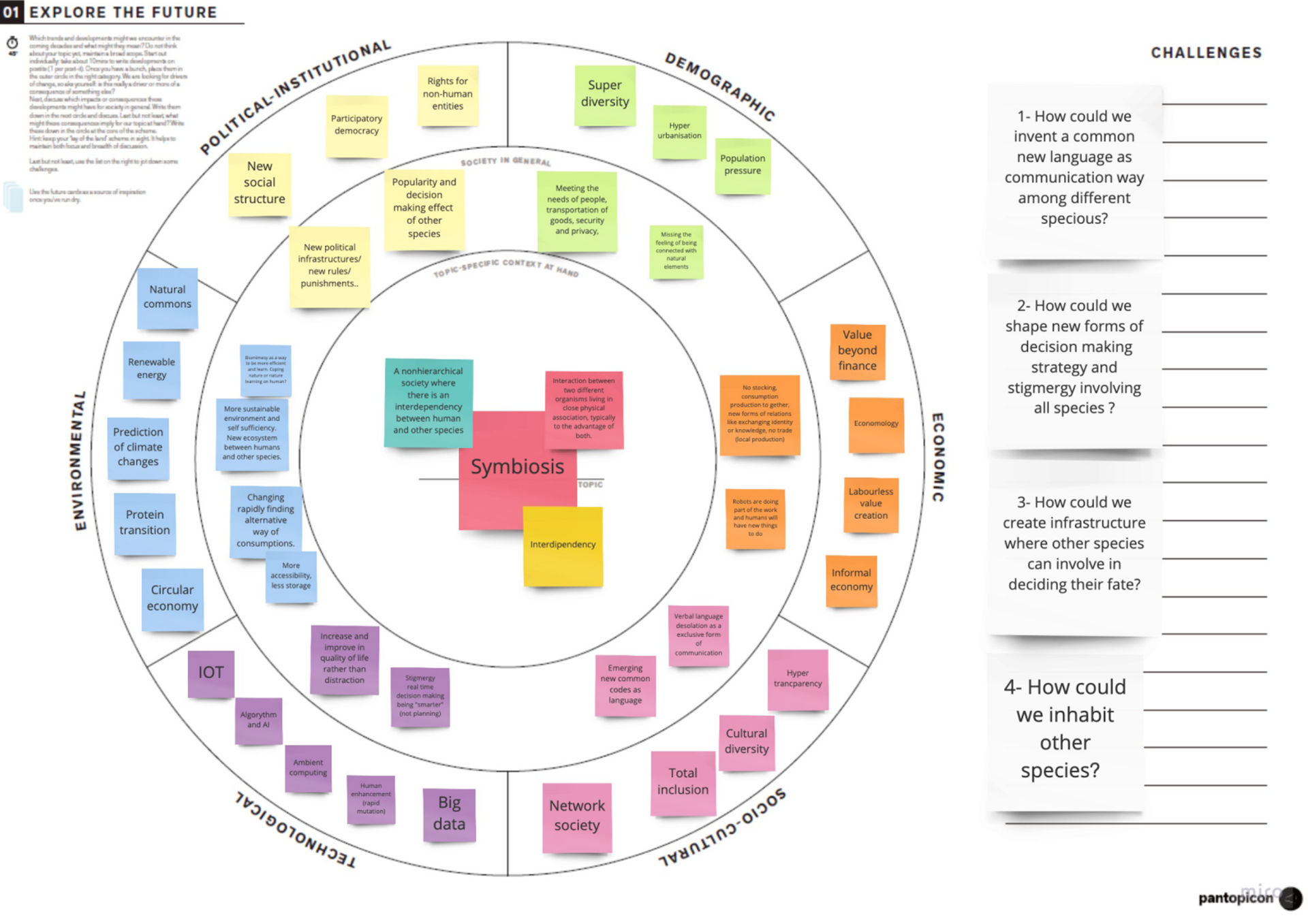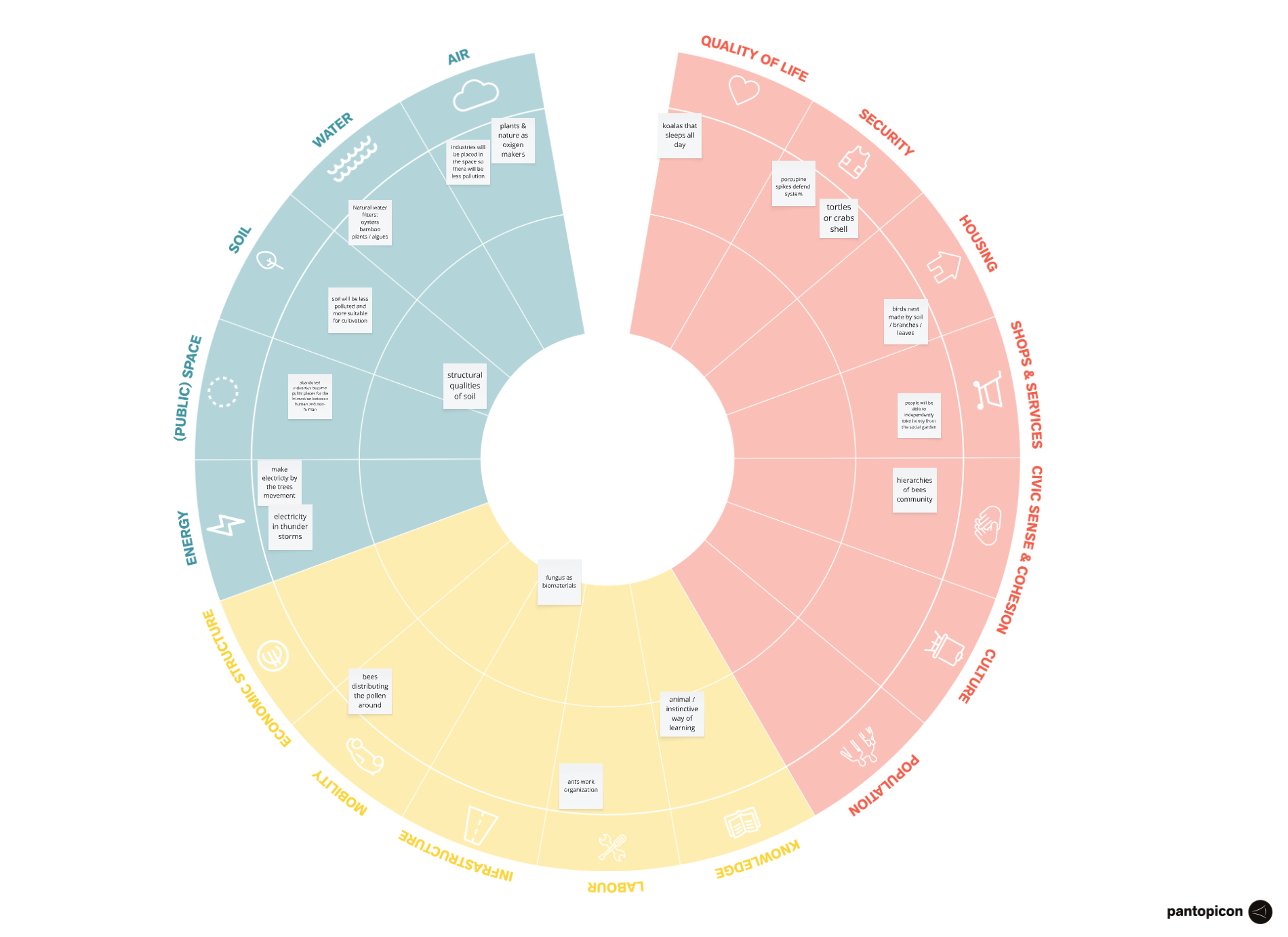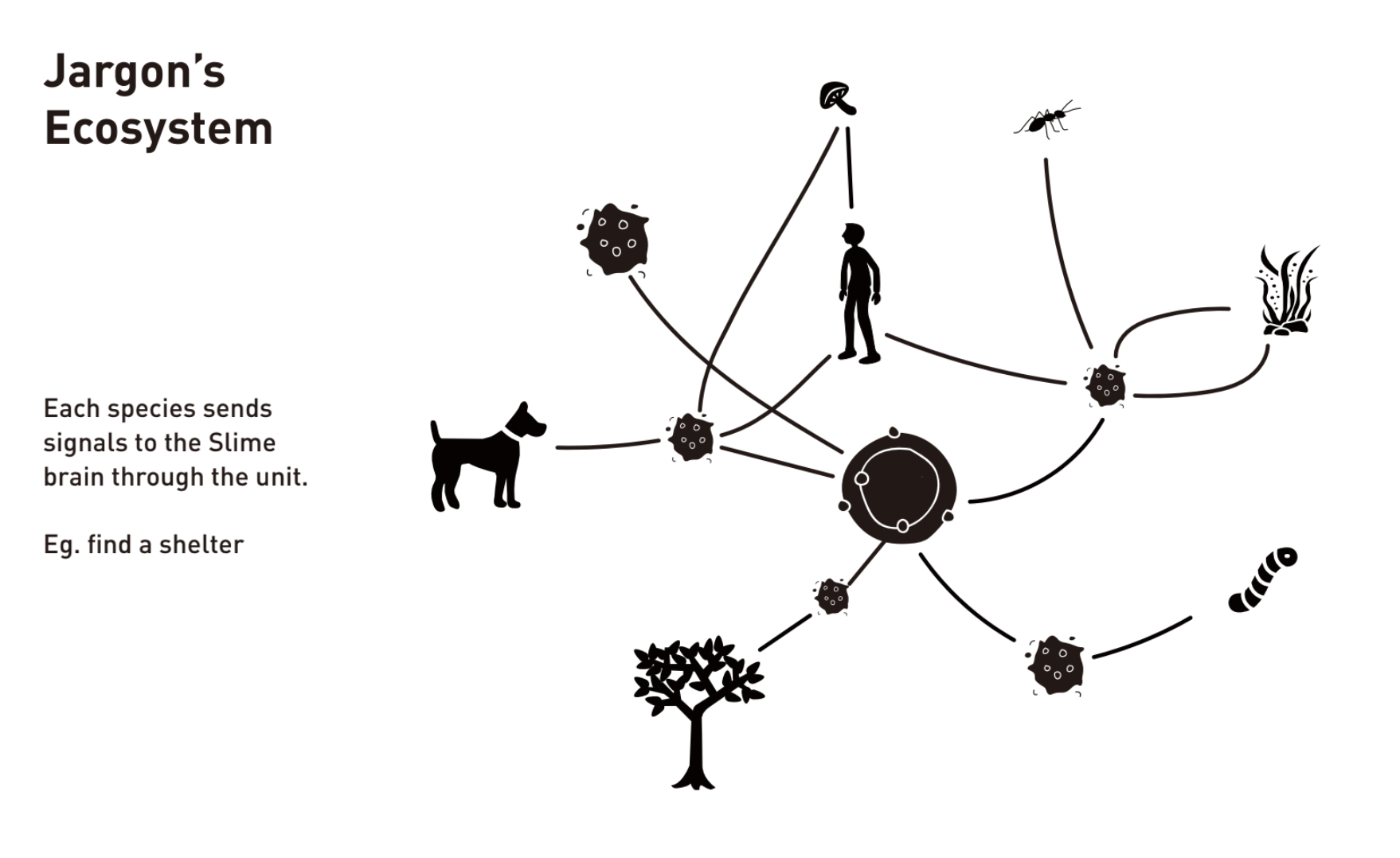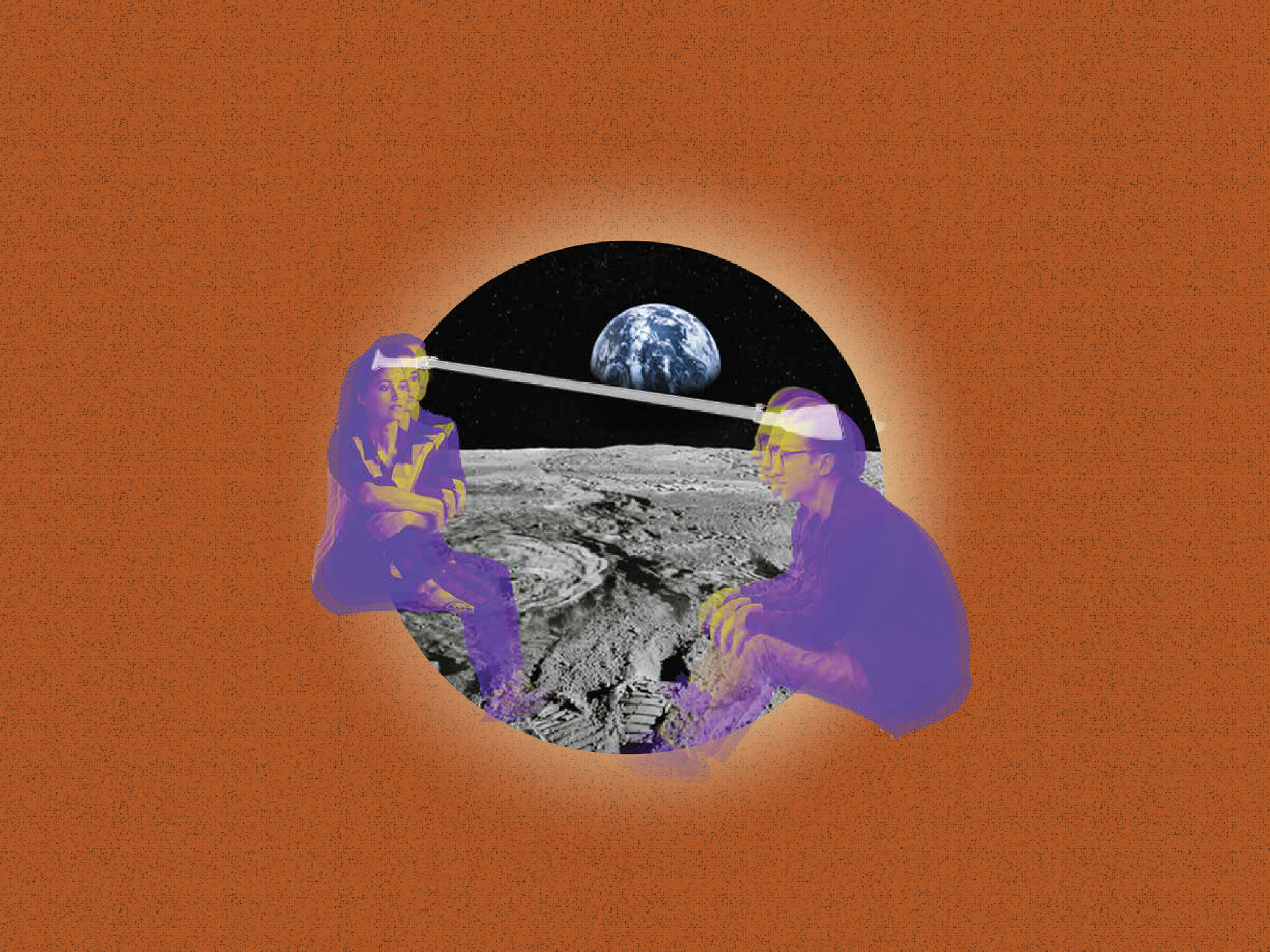JARGON: Symbiotic Urban Futures (2070)
A post-anthropocentric city shaped by bio-intelligence and multispecies collaboration
Project type:
Speculative Systems Design · Horizon Scanning · Bio-Urbanism
Overview:
JARGON envisions a post-anthropocentric city in 2070: a living, decentralized ecosystem where humans, animals, fungi, and microbial life co-create and co-govern urban life. Inspired by slime mold intelligence, this city adapts to biological signals in real-time, forming a new kind of civic space that prioritizes interdependence, empathy, and care across species.
STRATEGIC QUESTION:
How might we enable communication, decision-making, and infrastructure design across species to create a resilient, pluralistic city?
FUTURE SIGNALS & SYSTEM DRIVERS:
From the Explore the Future foresight map (Pantopicon template):
Environmental: Natural commons, protein transition, bio-sensing
Technological: IOT, stigmergy, human-nonhuman hybrid interfaces
Political: Non-human legal rights, participatory species democracy
Economic: Value beyond finance, informal ecological cooperation
Socio-cultural: Common language codes, post-verbal interaction
Demographic: Super-diversity, fluid ecological identities
The central concept of symbiosis anchors these trends into a coherent design direction.


SYSTEM SCENARIO: The Dog & The Shelter:
A stray dog walks into JARGON city. Spores emitted from a bio-mutated dandelion-like node on its back are sensed by slime mold tubes. This signal is interpreted by Big Slime, the decentralized city-brain. In minutes, living architecture adapts and forms a shelter, powered by the dog’s body heat. Once the dog rests, energy is recycled back into the system.
The city reads, learns, and grows, not from blueprints, but from signals and needs.
SYSTEM ARCHITECTURE OVERVIEW:
Inputs:
Signals: chemical, thermal, movement, emotional
Sent by all species: dogs, fungi, microbes, birds
Processing:
Slime mold logic, stigmergy, network-based reasoning
No central planning: structure emerges through bio-feedback
Outputs:
Structure adapts to create homes, environments, guidance
Resource redistribution, cross-species coordination



Reflection:
JARGON reframes the future of cities not as sites of domination, but as platforms for cooperation across lifeforms. This project challenges urban planning, ecology, and ethics by merging speculative fiction with trend-based foresight and systems thinking.
What if the city was not built for humans alone but with everyone, and for everything?

